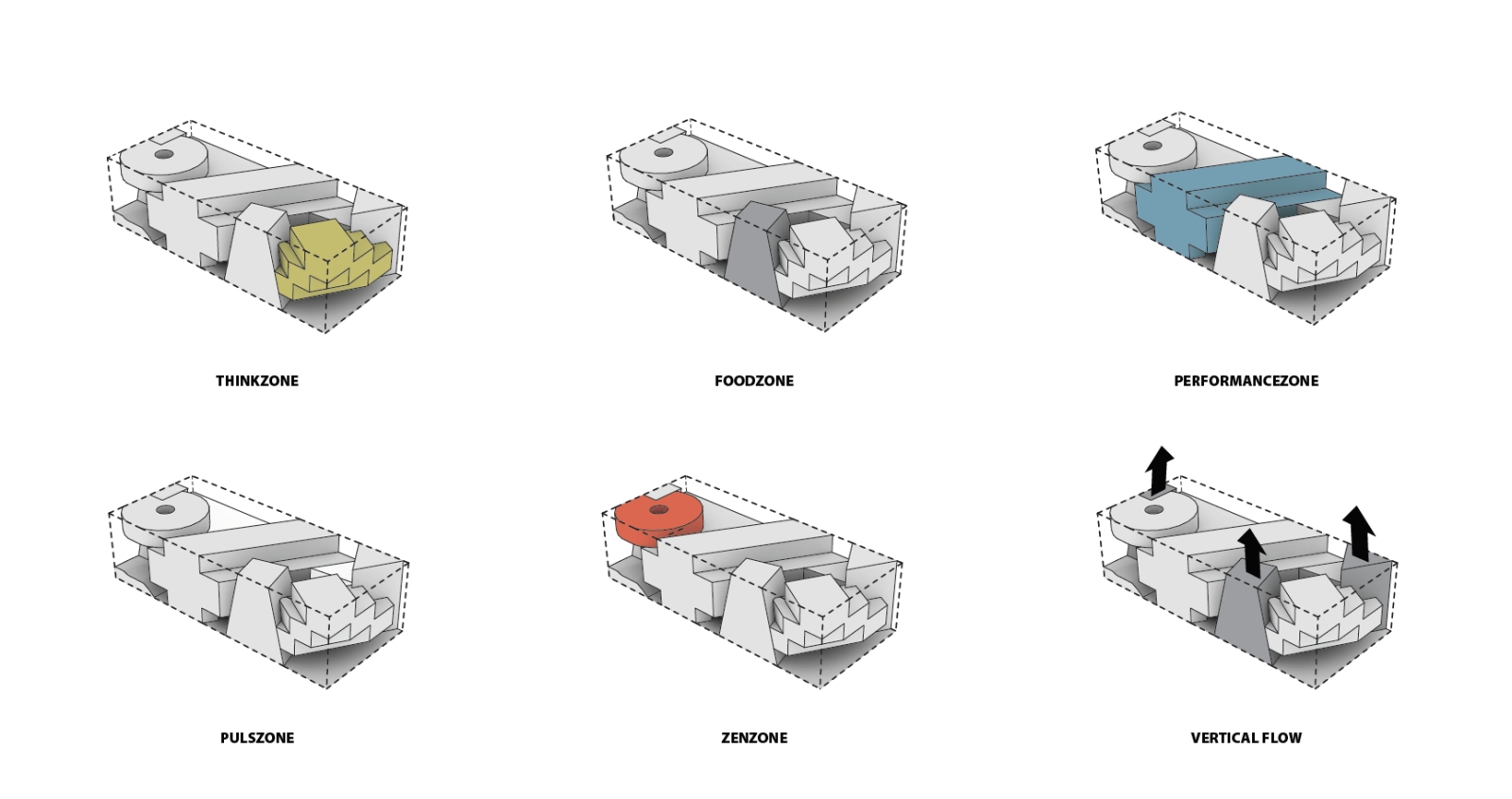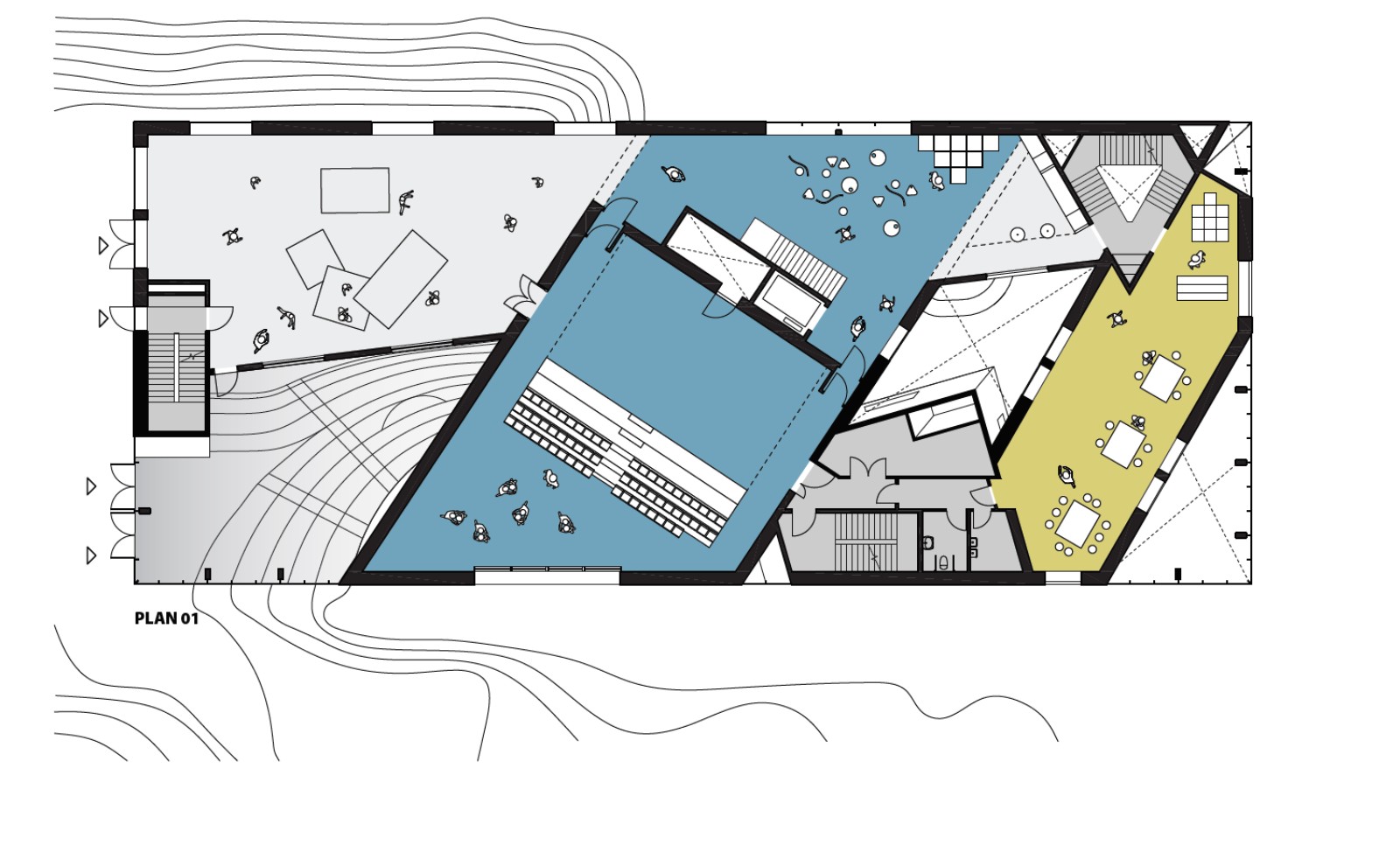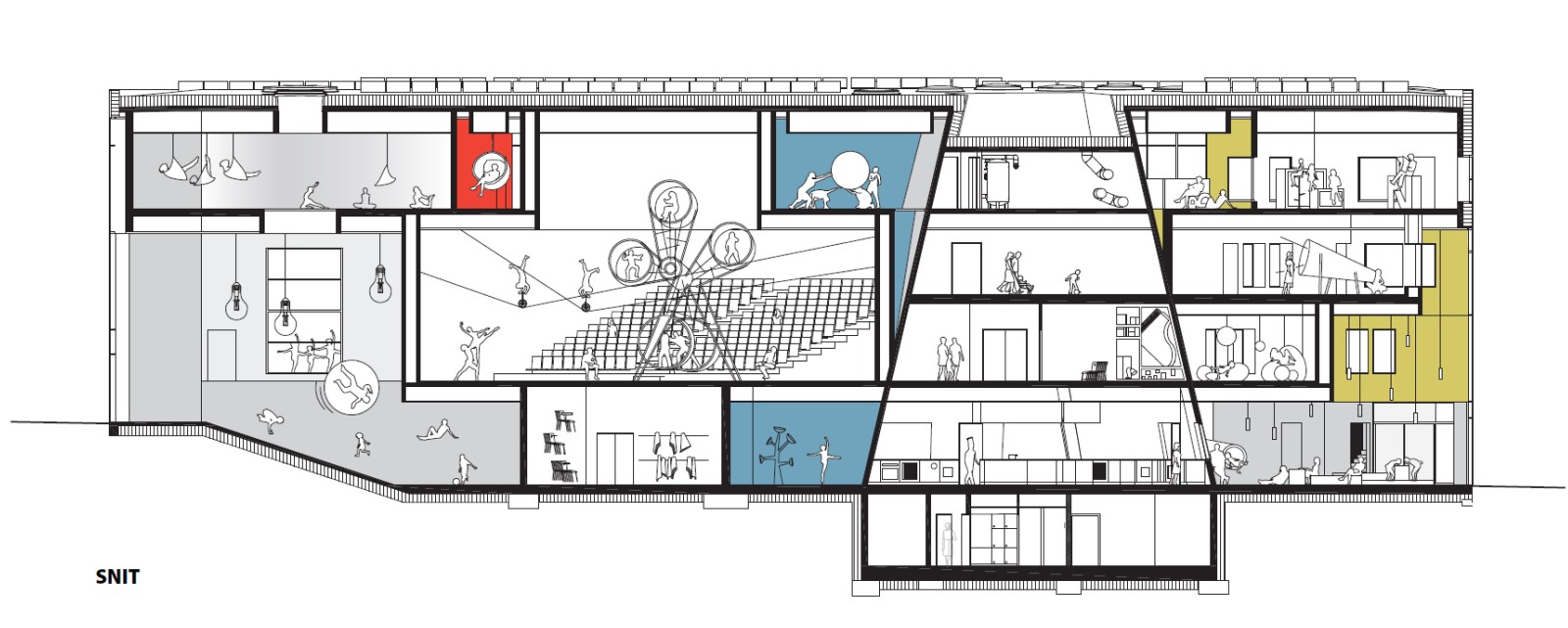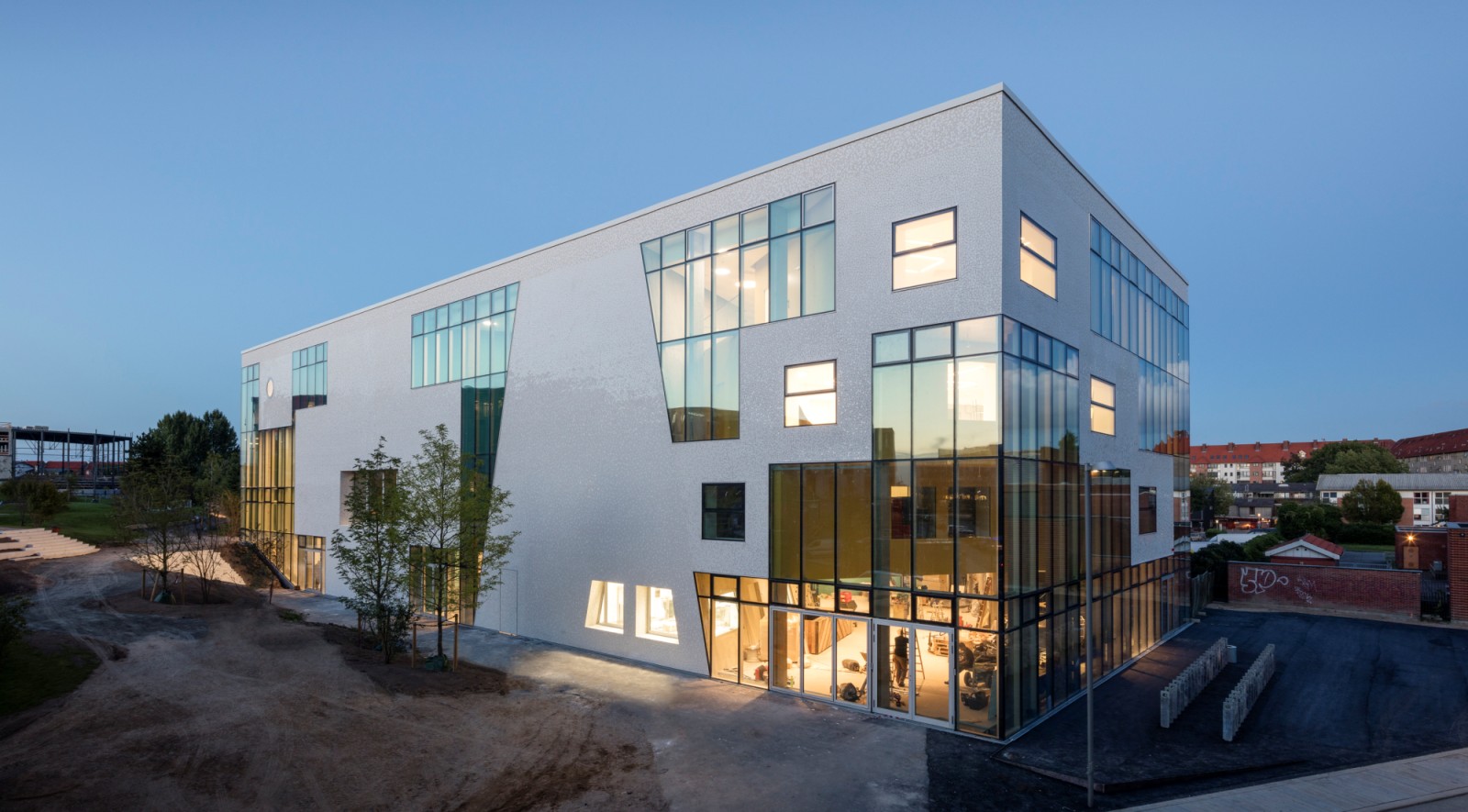
Crown Prince Frederik of Denmark will open the Ku.Be House of Culture and Movement, an activity hub in Frederiksberg, Denmark, which explores the boundaries between culture, health and movement. The project, designed by ADEPT http://adept.dk/ and MVRDV, https://www.mvrdv.com is the fi rst of its typology; a community space which also focuses on exploring and developing our most fundamental process, movement.

Ku.Be facilitates both fi xed and spontaneous programmes. Main volumes defi ne specifi c tempos of activities, whereas voids are left without a defi ned use to let users interpret them how they wish and discover new ways to use and get around the building. The activity from inside then spills out into the community as a garden, which will off er a variety of interactive environments.
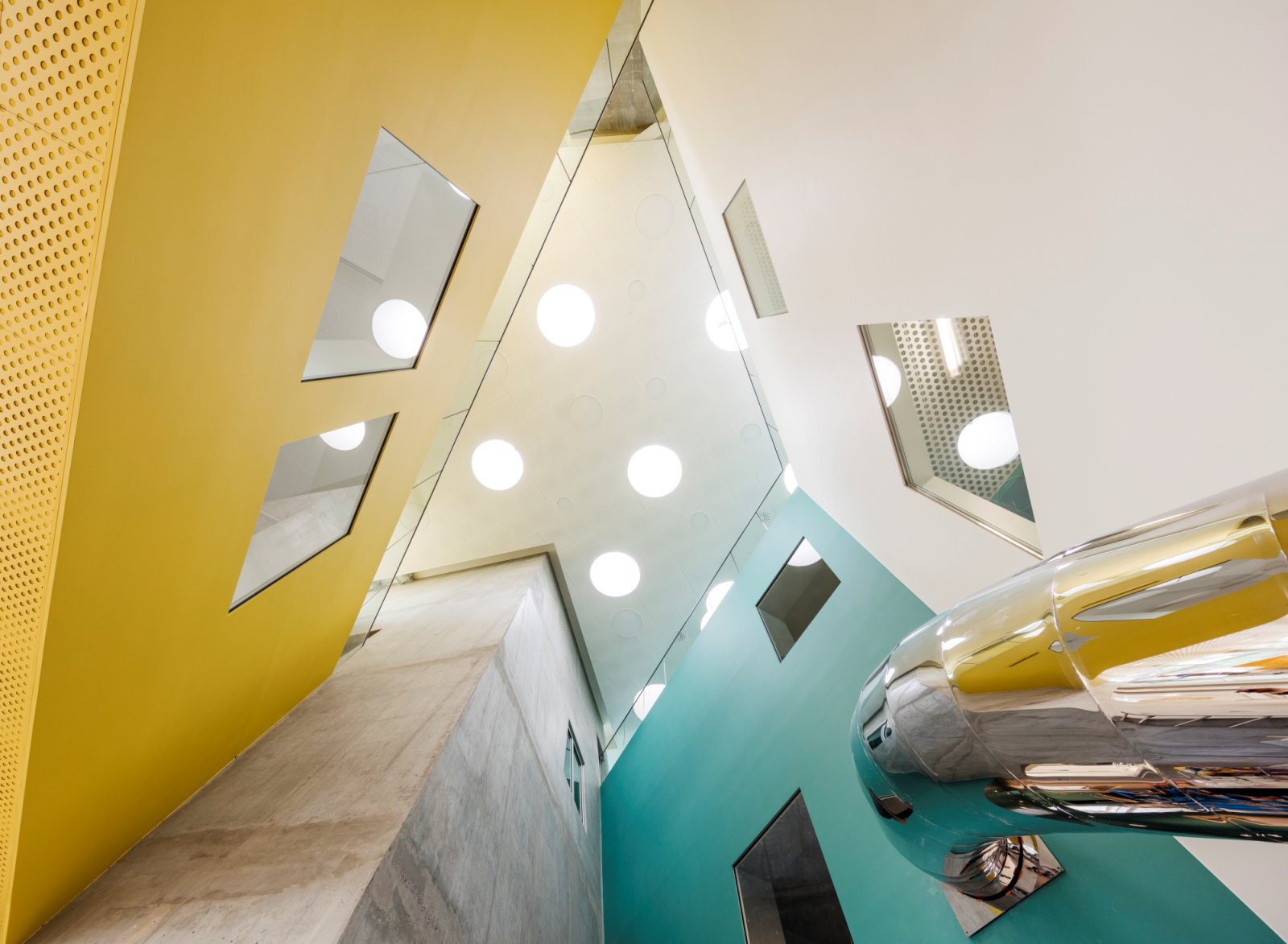
The 4.000 m2 Ku.Be House of Culture in Movement was designed for the municipality of Frederiksberg as a focal point for both the immediate community and also the wider area of Copenhagen; one that the people themselves could take ownership of and that would evolve its program based on the specifi c wants and needs of its users. The project is a new typology, responding to a brief that solely asked for a building that would bring people together and improve the quality of life.

In reply, ADEPT and MVRDV answered with one that blends theatre, sport and learning into a space where body and mind are activated to promote a more healthy life for everyone, regardless of age, ability or interest; creating links between people that would not otherwise connect with each other. The six primary volumes with each with their own program are clad in a unique colour and material, clearly defi ning them within the building; from outside these shapes are implied in the fragmented tile façade.

The route through the building focuses on developing and encouraging alternate forms of movement. The Labyrinth gets people on their hands and knees climbing through a three-dimensional network of cubes from the second to third fl oors; or alternatively they could take the Mousetrap, a vertical maze. A net, which spans several fl oors throughout the building, lets users climb up from fl oor to fl oor – suspended over the voids – and slides and fi refi ghter poles off er a fast way to get back down.

To cater for all abilities and ages, both easier and more standard ways of moving around are provided but even then, a visual connection is maintained throughout Ku.Be. “In Ku.Be we tried to turn your average experience of a building on its head,” explains MVRDV co-founder Jacob van Rijs. “What would otherwise be a simple, mindless journey through the building turns into an exploration and discovery of movement. Here it’s you that defi nes the route, however you want: climbing, sliding, crawling … jumping.”
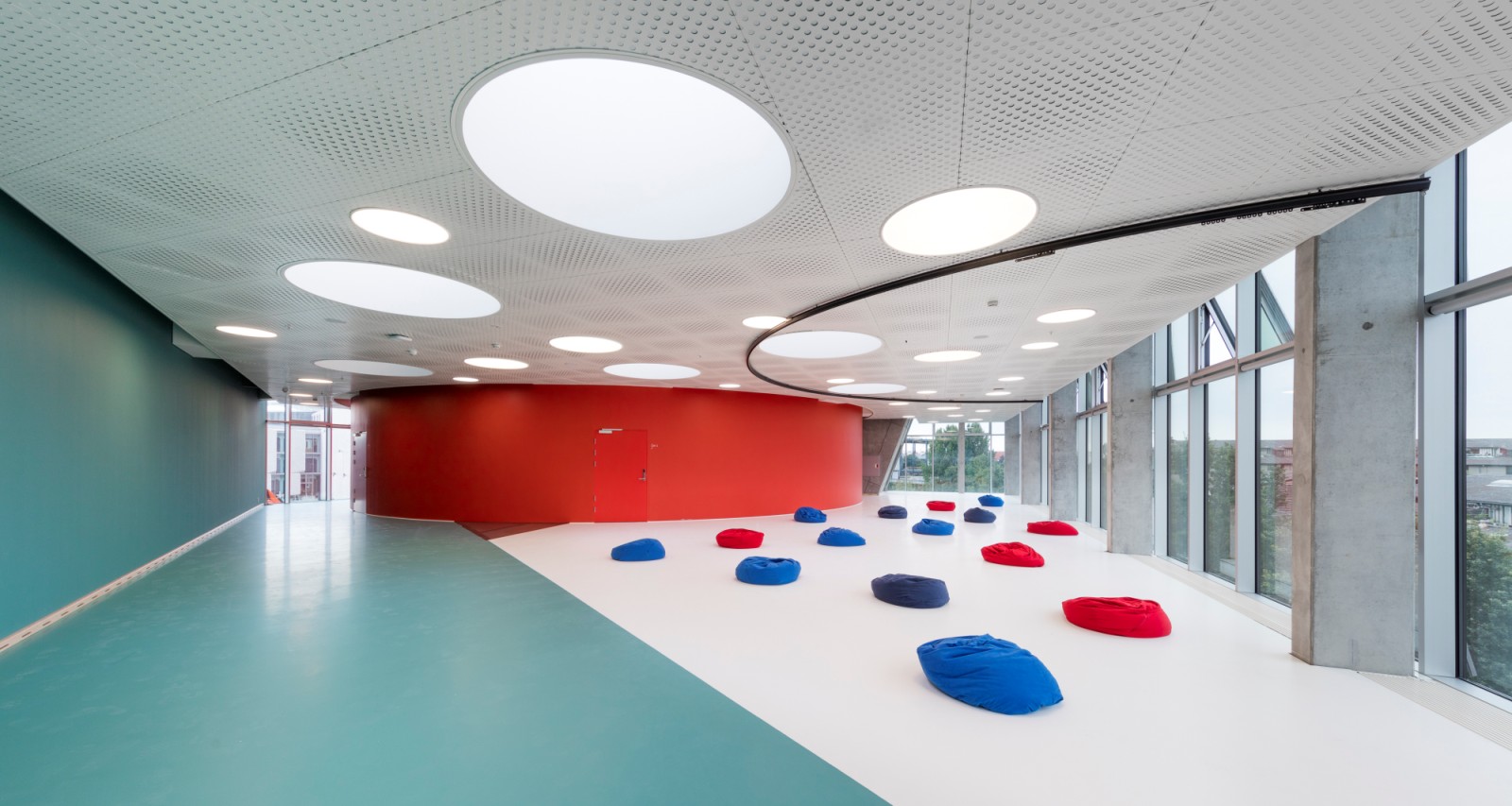
The urban gardens outside form the connection between Ku.Be and the urban realm, playing an important role in expressing the six volumes and the activities happening inside. The diverse landscape – a system of microclimates with changing sounds, lights and scents – blends seamlessly into the interior hill with integrated slides that reaches out into the gardens and ends in an amphitheatre outside. Acting as an extension of the urban landscape of Frederiksberg and integrating the community to such an extent, the House of Culture and Movement looks to become an incubator for further development within the neighbourhood.
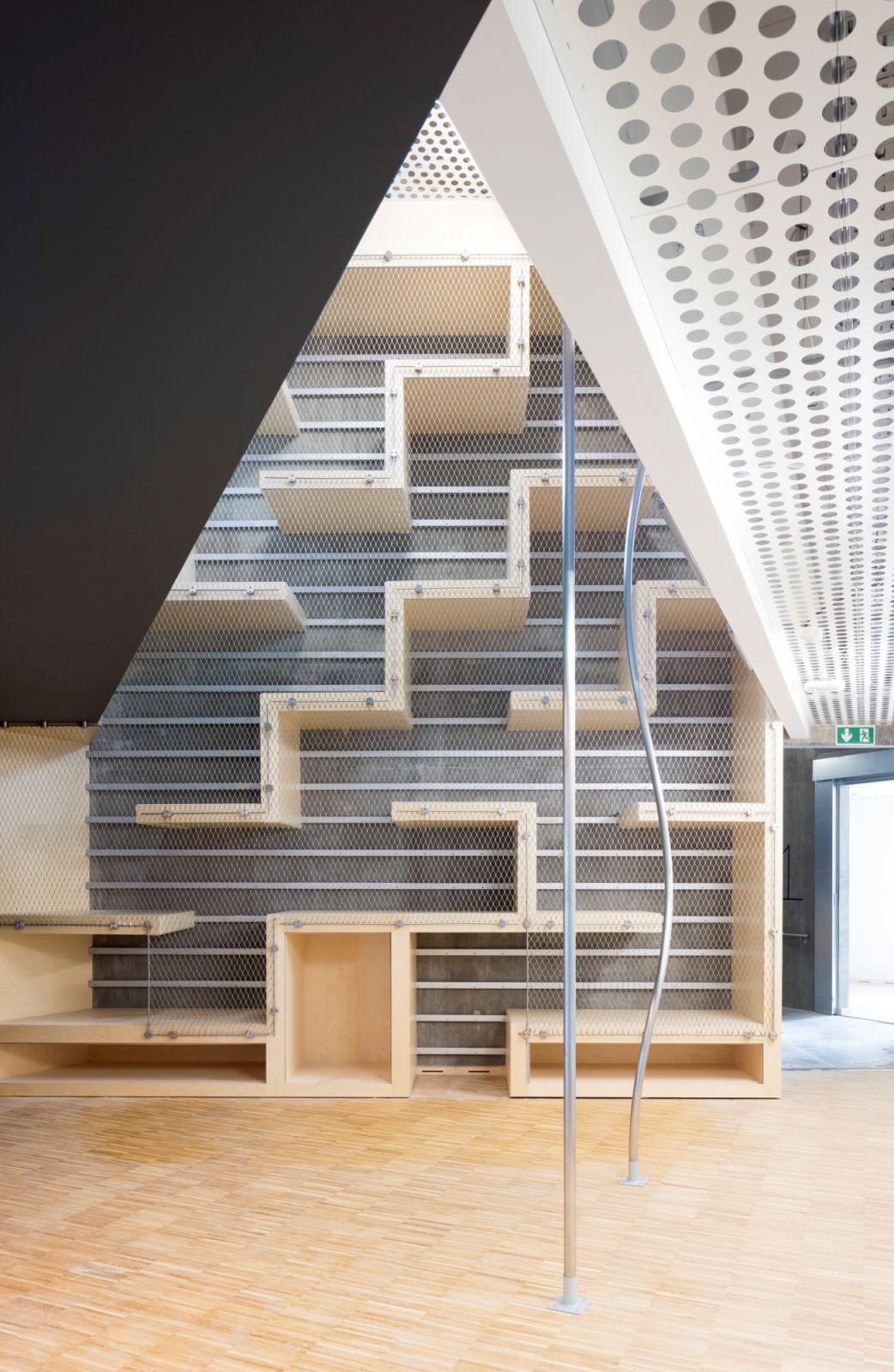
ADEPT and MVRDV achieved the project through close collaboration with: Soeren Jensen Engineers who provided the complex structural engineering to support the visionary architecture; SLA landscape architects, who designed the urban garden surrounding Ku.Be; and Max Fordham LLP to achieve environmental comfort throughout the building. Ku.Be was made possible by major contributions by Realdania and LOA (Lokale- & Anlægsfonden). Source by ADEPT, photo Adam Mørk, Courtesy of ADEPT.

